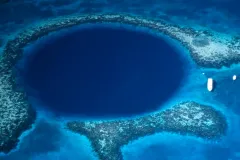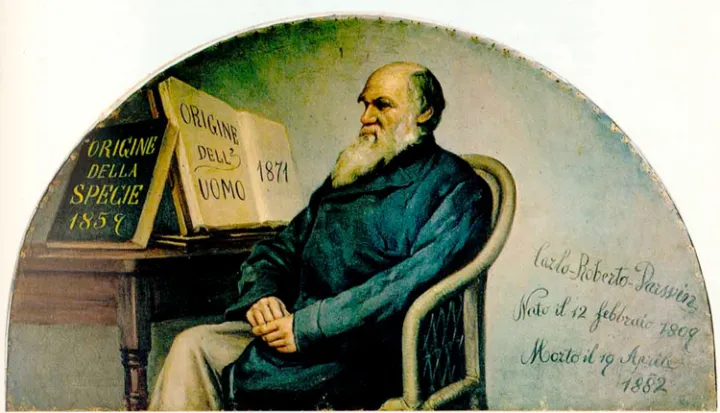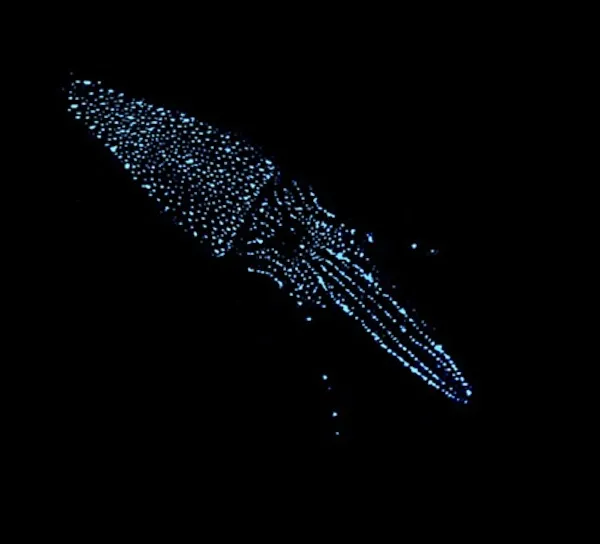Charles Darwin's Ocean Upwelling

Charles Darwin is so well known he almost needs no introduction. The 19th-century naturalist and geologist spent his life documenting and collecting information on the natural world. From birds to flowers to invertebrates, living and extinct, all species and their distributions held his interest, and he yearned to explain the great diversity of life—the "endless forms most beautiful and most wonderful"—that he observed. After more than 20 years of reading, writing, asking questions, accumulating data, and comparing notes with other scientists, he presented his revolutionary theory of natural selection in his book On the Origin of Species in 1859.
Darwin's life journey and theory is rooted in his early experiences with and on the ocean. At the age of 22, he set sail on the HMS Beagle as its on-ship naturalist just days before the close of 1831. The nearly five-year journey wasn't entirely agreeable to Darwin, as he was constantly seasick. "I hate every wave of the ocean, with a fervor, which you, who have only seen the green waters of the shore, can never understand," he wrote to his second cousin when the Beagle stopped off in Sydney, Australia in 1835. However, at other times when the waves were more tranquil, he delighted in the view from the side of his ship: "The beauty of the sky & brilliancy of the ocean together make a picture," he wrote in 1832.
At the time, with no photography and limited technology, observing and collecting ocean life was difficult even in shallow water, and little if anything was known about the deep sea. (That would change in the 1870s, when the HMS Challenger set out to explore the depths.) Nonetheless, Darwin made many observations about ocean life.
As the Beagle approached Cape Horn on October 24, 1832, he observed bioluminescent plankton:
The night was pitch dark, with a fresh breeze. — The sea from its extreme luminousness presented a wonderful & most beautiful appearance; every part of the water, which by day is seen as foam, glowed with a pale light. The vessel drove before her bows two billows of liquid phosphorus, & in her wake was a milky train. — As far as the eye reached, the crest of every wave was bright; & from the reflected light, the sky just above the horizon was not so utterly dark as the rest of the Heavens.
Earlier that same year, after spending a day collecting tiny plankton from the sea, he reflected: "Many of these creatures so low in the scale of nature are most exquisite in their forms & rich colours." (We couldn't agree more.)
While traveling aboard the Beagle, Darwin theorized about the ocean, with his attention drawn to coral reefs and coral islands. Naturalists before him observed that reefs are built by huge colonies of small coral animals, which leave behind cup-shaped skeletons that accumulate over time. But coral islands rose from deep water—deeper water than corals, which require sunlight, could survive. "How could corals have built these reefs?" they wondered.
Darwin came up with a theory: That the seafloor was slowly sinking around these islands, and that the inexplicable deep reefs formed at a time when the seafloor was closer to the surface. If the reefs accumulated slowly, the seafloor sunk even more slowly, so that the corals could grow upward to the surface and stay in the sun. The skeletons of their ancestors were left behind to form islands and reefs below the surface.
Within a few years, important scientists embraced his theory of how coral islands form. It still holds up today, although now rises and falls in sea level are also considered important in driving reef formation. In his book Reef Madness, writer David Dobbs expounds upon how Darwin's work on coral reefs influenced his theory of natural selection:
It’s hard to overstate how vital Darwin’s coral reef theory was in developing his career and thinking. It paved the way, conceptually and methodologically, for everything to come — particularly his transmutation theory [natural selection]. The likenesses startle. Like the transmutation theory, the coral reef theory described how small, virtually unnoticeable changes could create differences of essential type in seemingly immutable forms — and in doing so, account for broad patterns of development and difference.
Remarkably, Darwin came up with the foundation of this theory before he ever saw a coral reef with his own eyes. When he finally saw one during his voyage on the HMS Beagle, he was in awe. "Such formations surely rank amongst the wonderful objects of this world," he wrote after a stop at the Pacific island of Mauritius. "We feel surprise when travellers tell us of the vast dimensions of the Pyramids and other great ruins, but how utterly insignificant are the greatest of these, when compared to these mountains of stone accumulated by the agency of various minute and tender animals!" (Again, we couldn't agree more.)
These are just a few of Darwin's marine observations, out of many. We hope that on this Darwin Day (and the many to come), you won't just think of Darwin's terrestrial finches and orchids, but also his marine bioluminescence and coral reefs, barnacles and ocean-borne seeds.



